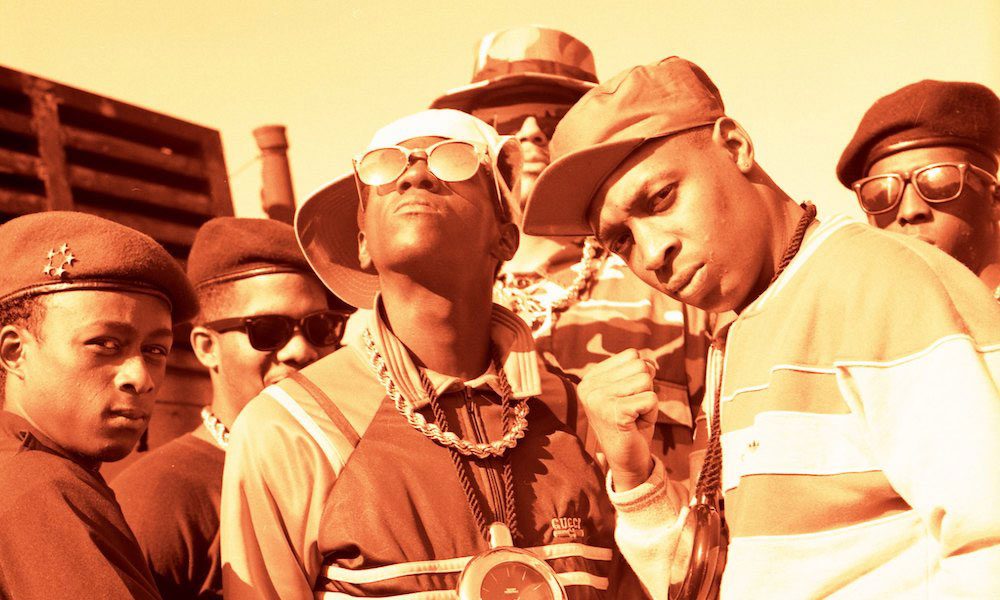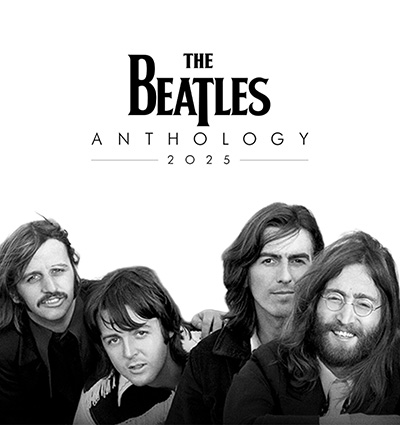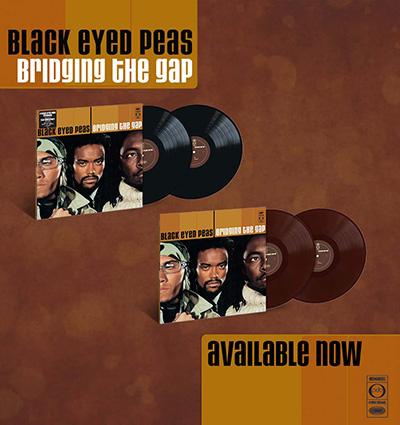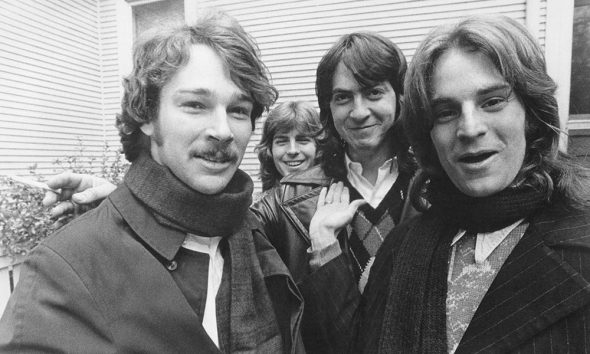Fight The Power: The Politics Of Hip-Hop
Reflecting and commenting on the world around them, the most gifted and charismatic MCs have taken the politics of hip-hop into the mainstream.

Since its earliest days, hip-hop has been inherently political – a powerful vehicle to deliver messages society needs to hear. Through the spoken word, its MCs have often conveyed the politics of hip-hop even more directly than those of their rock and folk predecessors.
Whether it’s Boogie Down Productions’ KRS-One breaking down the journey of the cow from the slaughterhouse to your dinner plate, or Doug E Fresh (and, later, Common) speaking about the sensitive topic of reproductive rights, hip-hop has always been the genre where no subject is off-limits.
Infused with political messages
Dating back to its earliest releases, hip-hop has been infused with political messages. On Harlem World Crew’s 1980 release “Rappers Convention,” the lyrics read as a news story ripped from the headlines, reporting back to the people in rhyme: “But we Americans gettin’/sick and tired of this political gong show/So we’re sendin’ our message over to Iran: let our people go/Now we been pushed around a lot but we’re not afraid of war/And Iran, your little cat and mouse game has really become a bore.”
Hip-hop as a genre can be traced back to militant spoken-word groups such as The Last Poets and The Watts Prophets; just as they reflected the realities of their surroundings, modern day hip-hop would deliver its own missives from the frontline, becoming, as Public Enemy frontman Chuck D put it, “black America’s CNN.” For a better part of a decade, much of the politics of hip-hop revolved around and reacted to the policies of then President Ronald Reagan, who served in office from 1981 through 1989.
Black America’s CNN
The very first hip-hop records commanded the attention of urban America and a sizable portion of the mainstream, and, in January 1983, Robert Hilburn wrote in the Los Angeles Times, “Grandmaster Flash & The Furious Five’s “The Message” was the most noteworthy single of 1982. A revolutionary seven-minute record that is a brilliantly compact chronicle of the tension and despair of ghetto life that rips at the innocence of the American Dream.”
While the track’s iconic closing verse originally appeared on the group’s 1979 cut “Super Rappin’,” Grandmaster Flash & The Furious Five’s lead vocalist, Grandmaster Melle Mel, performed it on “The Message.” Forever anointed as the father of modern socially-conscious hip-hop, Melle Mel would go on to pen several songs that would inspire generations of MCs to write rhymes that went well beyond braggadocio posturing and the materialistic boasts that were rooted in the genre.
From “Message II (Survival)” to the iconic “White Lines,” “Beat Street Breakdown,” “New York, New York” and “World War III,” Melle Mel set the lyrical bar high, and many MCs would aspire to emulate his effectiveness.
Setting the lyrical bar high
Kurtis Blow was the first solo hip-hop artist signed to a major record label (Mercury), and his first single was actually a Christmas song, 1979’s “Christmas Rappin’,” giving little hint to the songs he would soon release.
As the 80s saw an ever-widening economic gap, coupled with declining wages and cuts to social programs that disproportionately affected America’s inner cities, even rappers who were perceived as easy-going party MCs spoke up about socio-political issues. On his fourth EP, Party Time?, Blow manages to weave international relations into a party jam as he does on “Nervous.”
Blow was no stranger to political commentary, as evidenced on his 1980 self-titled album, Kurtis Blow, which contains the William Waring-penned gem “Hard Times,” which would serve as hip-hop’s first cover when, four years later, it was performed by Run-DMC.
No strangers to political commentary
The trio from Queens, New York, was the first commercially successful hip-hop group to make a record that paralleled James Brown’s “Say It Loud – I’m Black and I’m Proud.” “Proud To Be Black” appeared on their critically-acclaimed 1986 album Raising Hell.
Right around the corner from Raising Hell was the self-proclaimed prophets of rage, Public Enemy. But a number of factors set PE apart from their predecessors, not least their concoction of Nation Of Islam dogma, James Brown samples, Black Panther visuals, and the spirit of early Grandmaster Melle Mel.
Self-proclaimed prophets of rage
Everything about the group became the subject of conversation and debates that still continue today. Even their iconic album covers are still being dissected and their meanings debated. Whether they were raging against corporations who exploited black communities on “Shut ’Em Down” or creating an anthem for the streets in “Fight The Power,” Public Enemy were both before their time and right on time.
Just as the success of Grandmaster Flash & The Furious Five opened the doors for Public Enemy, Public Enemy, in turn, opened the doors for songs like Stetsasonic’s anti-apartheid anthem “AFRICA,” Chill Rob G’s classic “Court Is Now In Session” and Intelligent Hoodlum (aka Tragedy Khadafi)’s political rap “Arrest The President.”
Stop the violence movement
This movement culminated at the end of the decade when KRS-One assembled the top East Coast MCs of the day to jump on the collaborative track, “Self Destruction,” in support of the Stop The Violence Movement, featuring everyone from Public Enemy to Doug E Fresh, Heavy D, MC Lyte and fellow members of Boogie Down Productions.
Just as hip-hop took aim at the war on drugs and its societal aftermath in the 80s, the 90s saw the genre make its way into the mainstream and address a new set of obstacles that plagued America and beyond. Groups such as Black Star, Arrested Development, The Roots, and Dead Prez picked up where the Native Tongues collective (Jungle Brothers, De La Soul, A Tribe Called Quest, Black Sheep left off, addressing violence, racism, and Afrocentrism through intricate wordplay. Following their landmark 1998 release Mos Def & Talib Kweli Are Black Star, both Yasiin Bey (formerly Mos Def) and Kweli continued their legacy as formidable political wordsmiths.
As much as gangsta rap appeared to be the antithesis of socially-conscious hip-hop, the style brought its own socio-political commentary, from forefathers NWA’s rallying cry of “F__k The Police,” in 1988, to 2Pac’s redemptive anthem “Changes” (1998) and Ice Cube’s controversial “I Wanna Kill Sam,” from his 1991 sophomore release, Death Certificate. Just as Tipper Gore’s censorship campaign sought to regulate rock in the 80s, hip-hop became Capitol Hill’s target in the 90s (starting with a 1994 congressional hearing on the lyrical contents of gangsta rap), and again in the 00s.
A new school of artists
While much of the politics of hip-hop had sprung from the opposing East and West Coasts, during the 00s the Midwest (particularly Chicago and Detroit) would generate its own new school of hip-hop artists with a political bent. One of the most progressive artists to come out of this scene was Common. From his early days in the 90s underground hip-hop scene to his time in the neo-soul and alt-hip-hop collective Soulquarians, and his commercial breakthrough, 2000’s Like Water For Chocolate, Common has always worked to push hip-hop forward. His track “A Song for Assata,” about the trial, incarceration, and political asylum of Assata Shakur (a member of the Black Panther Party and Tupac Shakur’s godmother) still lands him in hot water.
Another seismic shift
Just four years after its release, hip-hop experienced another seismic shift, with the arrival of Kanye West. The same year that he dropped his seminal debut album, The College Dropout, in 2004, West teamed up with Common and John Legend to form the GOOD Music crew and record label. As Common described it years later, West was instrumental in breaking down the walls between commercial and socially-conscious hip-hop: “Kanye kind of brought in a thing where it was like, you can rap about getting money and ‘Jesus Walks’,” he told Fader in 2016. “You can be down with Jay Z and Mos Def. Kanye started bringing together just those different worlds.”
Kanye would usher in a new era of hip-hop that toed the line between commercial and conscious hip-hop, tackling racism in a tale of his grandfather’s arrest for sitting at a segregated lunch counter (“Never Let Me Down”), and outselling the swaggering gangsta rap of the mid-00s. Meanwhile, OutKast was blowing up the charts with “BOB” (“Bombs Over Baghdad”), Eminem was calling out “White America” on 2002’s The Eminem Show, and Lupe Fiasco was getting geo-political on his critically acclaimed debut, Lupe Fiasco’s Food & Liquor, in 2006.
Entering the political sphere
Occupy Wall Street, Black Lives Matter, and March For Our Lives… the 2010s has brought with it a number of political movements that quickly made their way into hip-hop. With more platforms to spread the message through social media, and the rise of streaming, artists can spread their gospel over a mic or broadcast it directly to their fans. Political activism is no longer confined to lyrics, as more artists the likes of Chance The Rapper and Kanye West have started entering the political sphere.
The greatest statement of the decade, however, has come from Kendrick Lamar, whose groundbreaking 2015 album, To Pimp A Butterfly, somehow encapsulated an entire history of African-American experience, while also managing not only to speak to the moment but also to ensure that its forward-thinking brilliance will remain relevant for generations to come. In one fell swoop, “Alright” became the de facto anthem for the Black Lives Matter movement, while To Pimp…’s follow-up, DAMN., would see Lamar earn himself a Pulitzer Prize for songs that offer “affecting vignettes capturing the complexity of modern African-American life.”
A fresh class of artists continue to push the political envelope alongside Lamar, among them Vic Mensa, Noname, and Childish Gambino. And as each generation gives birth to new batches of political thinkers, hip-hop will continue to be a tool in which artists can sharpen, refine, and wield.
As Lamar says in his “interview” with Tupac on To Pimp A Butterfly: “In my opinion, only hope that we kinda have left is music and vibrations.”















Samuel Garza
December 2, 2021 at 1:41 am
Branford Marsalis created a stunning piece of work on Public Enemy’s “Fight The Power”.
Paul
December 7, 2022 at 5:40 am
Great article, shame you didn’t mention Paris or We’re all in the Same Gang by The West Coast Rap All-stars.
Richard Pickel
December 26, 2023 at 8:11 pm
As the LA riots, ostensibly about local law enforcement departments’ members’ racism and violence, were raging, I said that the one thing which you can be absolutely, positively certain of is that the rioters will injure and kill dozens to hundreds of helpless people who aren’t racists, and not injure, not to mention not kill, one member of any law enforcement agency. Because they’re rap and hip hop music fans, and that’s all they’re capable of doing. Of course, that’s exactly what they did.